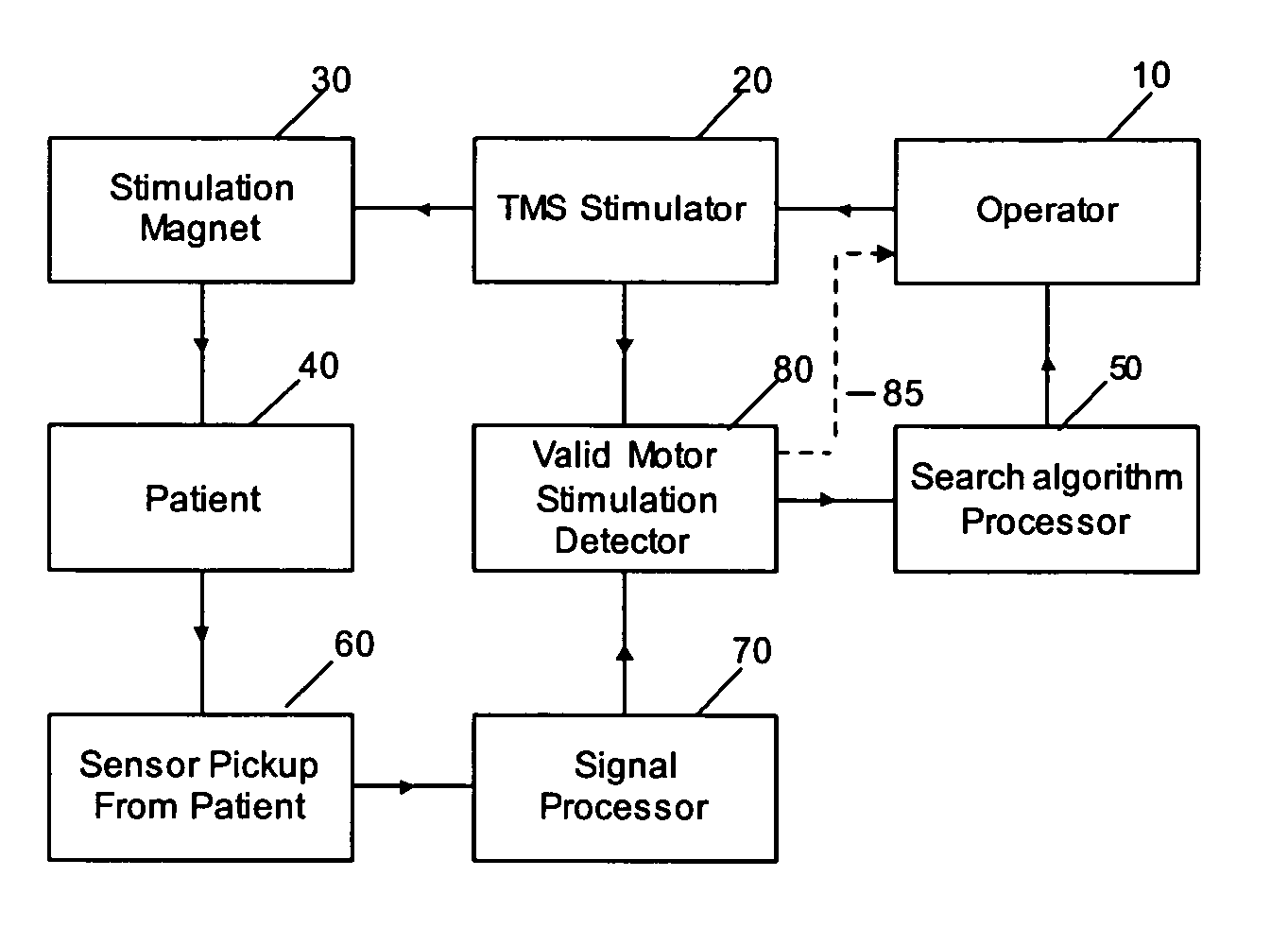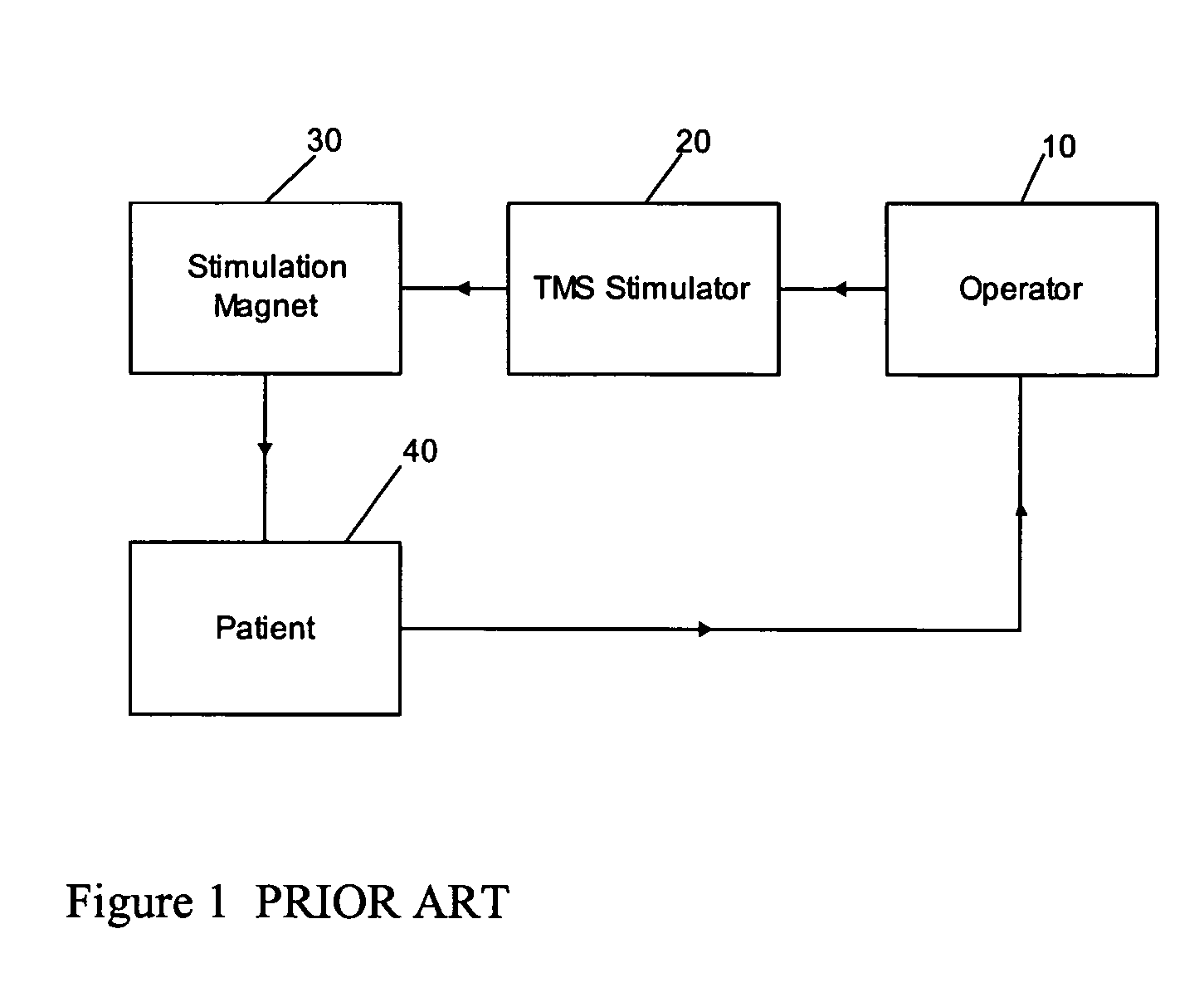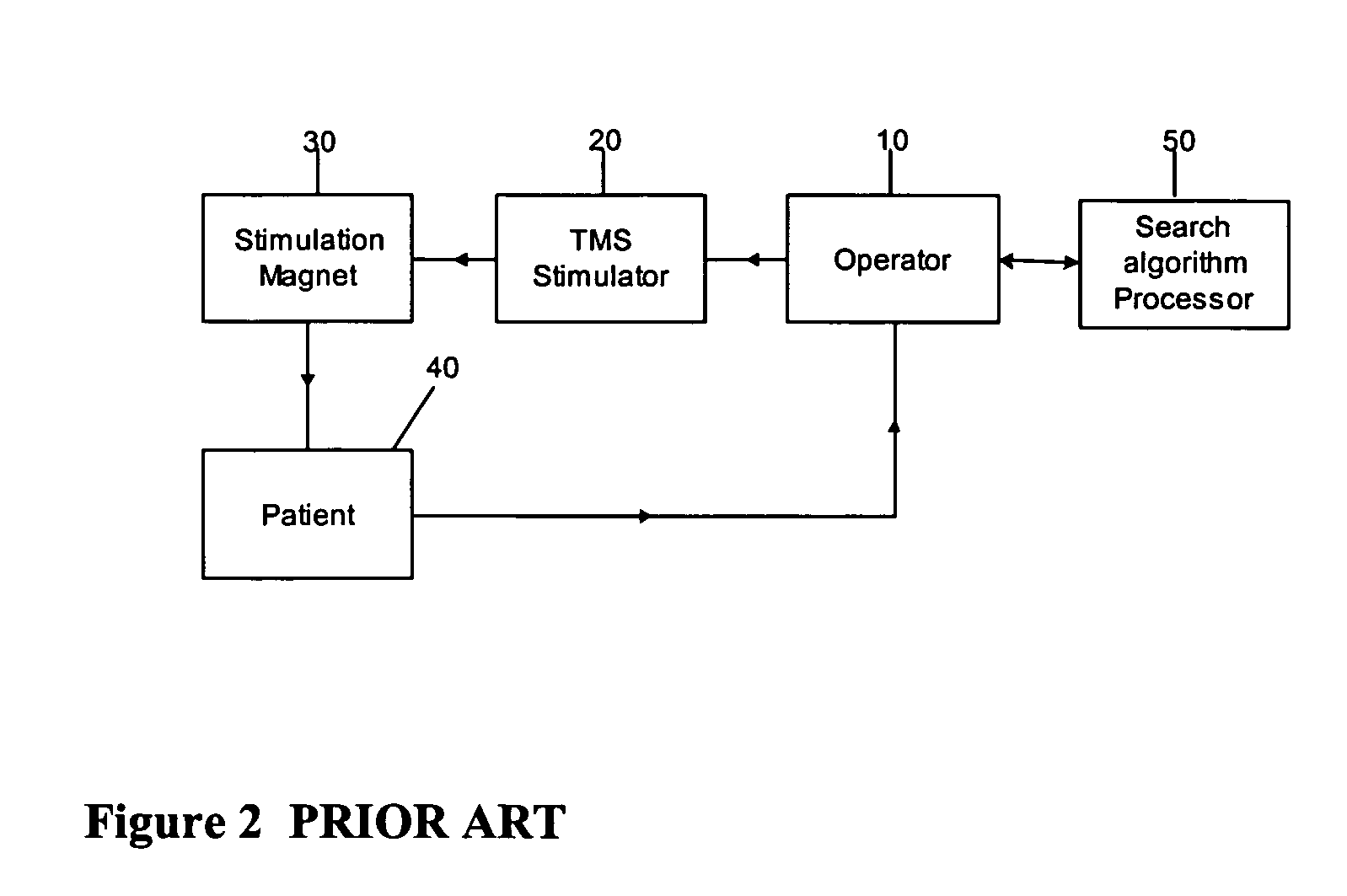Determining stimulation levels for transcranial magnetic stimulation
a transcranial magnetic stimulation and stimulation level technology, applied in the field of electrical brain stimulation, can solve the problems of insufficient direct measurement of evoked potential, insufficient development of techniques, and time-consuming and high-dependent techniques, and achieve the effect of appropriate calibration and high degree of sensitivity
- Summary
- Abstract
- Description
- Claims
- Application Information
AI Technical Summary
Problems solved by technology
Method used
Image
Examples
Embodiment Construction
[0018]A detailed description of exemplary embodiments of the present invention will now be described with reference to FIGS. 3 and 4. Although this description provides detailed examples of possible implementations of the present invention, it should be noted that these details are intended to be exemplary and in no way delimit the scope of the invention.
[0019]Prior to TMS, the patient's motor threshold (MT) position is determined and the stimulation position is determined in reference to the MT position. The magnetic flux density, B, produced by the TMS therapy coil is adjusted with the coil positioned at the MT position in order to determine the MT stimulation level. This level is variable from patient to patient or over time for a given patient. Therefore, this procedure may have to be repeated. A simple and repeatable process to facilitate setting the MT stimulation level is thus advantageous in the clinical TMS procedure. The TMS therapy stimulation level is set as a relative p...
PUM
 Login to View More
Login to View More Abstract
Description
Claims
Application Information
 Login to View More
Login to View More - R&D
- Intellectual Property
- Life Sciences
- Materials
- Tech Scout
- Unparalleled Data Quality
- Higher Quality Content
- 60% Fewer Hallucinations
Browse by: Latest US Patents, China's latest patents, Technical Efficacy Thesaurus, Application Domain, Technology Topic, Popular Technical Reports.
© 2025 PatSnap. All rights reserved.Legal|Privacy policy|Modern Slavery Act Transparency Statement|Sitemap|About US| Contact US: help@patsnap.com



